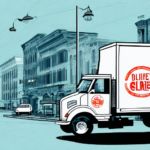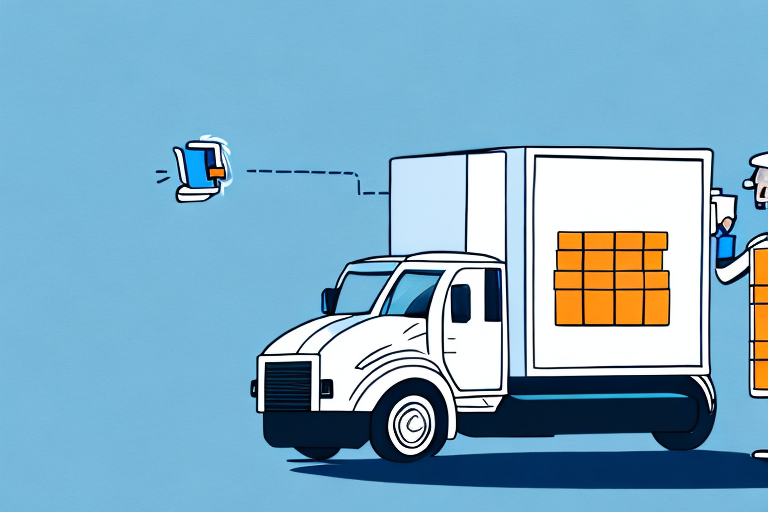What Is a Proof of Delivery? Exploring the Basics of This Important Document
In the world of business and logistics, ensuring that goods and products are delivered to the right recipient at the right time and place is crucial. A Proof of Delivery (POD) document serves as evidence of the successful delivery of goods or services to a customer. It can be a written or electronic document that confirms the completion of a delivery as agreed upon. This article delves into the fundamental aspects of POD, its significance, key components, various types, creation processes, and future trends.
Significance and Benefits of Proof of Delivery for Businesses
Ensuring Delivery Accuracy and Customer Satisfaction
POD documents are vital for confirming that deliveries have been made accurately and on time. According to the Logistics Management, businesses utilizing effective POD processes observe up to a 20% improvement in customer satisfaction rates. Accurate delivery records help in minimizing disputes and enhancing the reliability of service.
Legal Protection and Dispute Resolution
POD serves as a legal record that can be used to settle disputes regarding deliveries. In cases where there is a disagreement about whether goods were delivered, the POD provides concrete evidence, protecting businesses from fraudulent claims. This legal protection is essential for maintaining trust and accountability with customers.
Operational Efficiency and Data-Driven Insights
Analyzing data from POD documents enables businesses to identify patterns and inefficiencies in their delivery processes. For instance, data might reveal frequent delays in specific areas, allowing companies to optimize routing and scheduling. This leads to enhanced operational efficiency and cost savings.
Types and Essential Elements of Proof of Delivery Documents
Traditional vs. Electronic Proof of Delivery
There are various types of POD documents, each suited to different business needs. Traditional paper-based PODs include delivery receipts and bills of lading, which require manual handling and storage. In contrast, electronic POD (ePOD) systems leverage digital technologies to streamline the delivery confirmation process. ePOD solutions not only reduce paperwork but also allow for real-time tracking and instant updates.
Key Components of a Comprehensive POD Document
A well-crafted POD document typically includes the following elements:
- Sender and Recipient Information: Names, addresses, and contact details.
- Description of Goods or Services: Detailed information about what was delivered.
- Delivery Date and Time: Specifics of when the delivery occurred.
- Signatures: Authentication from both the delivery agent and the recipient.
- Additional Details: Special instructions, photographs, and reference numbers.
Creating, Managing, and Storing Proof of Delivery
Steps to Create a Valid Proof of Delivery Document
To ensure that a POD document is legally binding and effective, follow these steps:
- Collect Accurate Information: Gather all necessary details such as sender and recipient data, description of goods, and delivery specifics.
- Use Standardized Forms: Employ standardized POD templates to maintain consistency and facilitate easier processing.
- Obtain Signatures: Secure signatures from both the delivery personnel and the recipient to confirm delivery.
- Record Delivery Date and Time: Accurately log the exact date and time of delivery.
- Store Documents Securely: Implement secure storage solutions to preserve POD records for future reference.
Best Practices for Managing and Storing PODs
Effective management and storage of POD documents are crucial for their integrity and accessibility. Best practices include:
- Centralized Document Management Systems: Utilize centralized platforms to store and access PODs efficiently.
- Data Security Measures: Implement encryption, access controls, and regular backups to protect sensitive information.
- Regular Audits: Conduct periodic audits to ensure that POD records are accurate and up-to-date.
- Cloud-Based Storage Solutions: Adopt cloud storage to facilitate remote access and disaster recovery.
Technological Innovations and Future Directions in Proof of Delivery
Automation and Digital Solutions
The adoption of automation and digital solutions has significantly enhanced the POD process. Digital signatures, electronic document management systems, and automated data capture reduce manual errors and accelerate the delivery confirmation process. Businesses leveraging these technologies report increased accuracy and streamlined operations.
Real-Time Tracking and Data Analytics
Integrating real-time tracking and data analytics into POD systems allows businesses to monitor deliveries as they happen. GPS tracking provides visibility into the location and status of deliveries, while data analytics offer insights into delivery performance and customer behavior. According to Forrester Research, companies utilizing real-time tracking see a 25% improvement in delivery reliability.
Emerging Technologies and Future Trends
Looking ahead, technologies such as blockchain and the Internet of Things (IoT) are poised to revolutionize the POD landscape. Blockchain can provide immutable and transparent delivery records, enhancing trust and security. IoT devices enable real-time monitoring of goods' conditions during transit, ensuring that deliveries meet quality standards.
Overcoming Challenges and Legal Implications in the Proof of Delivery Process
Addressing Delays and Document Retrieval Issues
Common challenges in the POD process include delays in receiving and processing documents, as well as difficulties in retrieving them when needed. Implementing automated systems can significantly reduce delays by streamlining data entry and storage processes. Additionally, centralized document management solutions facilitate easy retrieval of POD records.
Ensuring Standardization and Reducing Errors
Lack of standardization can lead to inconsistencies and errors in POD documentation. Establishing standardized procedures and using uniform forms helps in minimizing errors and ensuring that all necessary information is captured consistently. Training employees on these standardized practices is also essential for maintaining accuracy.
Risks of Incorrect or Incomplete POD Documents
Incorrect or incomplete POD documents can have severe legal consequences for businesses. They may lead to disputes over deliveries, non-payment for services rendered, and potential legal actions. Ensuring the accuracy and completeness of PODs is essential to avoid these risks and to protect the business's legal interests.
Case Studies: Benefits of Accurate Proofs of Delivery for Businesses
Several businesses have reaped significant benefits from implementing accurate POD processes. For example, a leading logistics company reported a 30% reduction in delivery disputes after transitioning to an electronic POD system. Similarly, a retail chain experienced faster payment cycles and improved customer trust by utilizing real-time POD tracking technologies.
Conclusion: Why Every Business Needs to Prioritize Their Proof of Delivery Process
The Proof of Delivery process is integral to the success of businesses involved in logistics and transportation. It ensures that deliveries are executed accurately, provides legal protection, and offers valuable insights for operational improvements. By adopting best practices in creating, managing, and utilizing PODs, and by embracing technological advancements, businesses can enhance their delivery operations, reduce errors, and build stronger relationships with their customers. Prioritizing the POD process not only safeguards businesses legally but also drives overall efficiency and customer satisfaction.




















